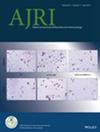SMURF2 Inhibits Autophagy and Growth in Ovarian Cancer by Regulating the RACK1/AKT/mTOR Pathway
Abstract
Background
Ovarian cancer (OC) is a common malignancy characterized by disseminated peritoneal metastases. Smad ubiquitin regulatory factor 2 (SMURF2) is involved in OC progression by stabilizing receptor for activated C kinase 1 (RACK1). However, the functions and mechanisms of action of SMURF2 in OC remain unclear. This biological function of SMURF2 in OC and its potential mechanisms of action were investigated in this study.
Methods
The expression of SMURF2 in ovarian tumor tissues, patient serum, and OC cell lines was determined using reverse transcription-quantitative polymerase chain reaction (RT-qPCR) and/or western blotting. 3-(4,5-dimethylthiazol-2-yl)-2,5-diphenyl-2H-tetrazolium bromide (MTT) assays, flow cytometry, and terminal deoxynucleotidyl transferase dUTP nick-end labeling (TUNEL) were used for detecting cell proliferation and apoptosis. Autophagosomes in SKOV3 cells were observed using transmission electron microscopy. Immunohistochemistry and RT-qPCR were performed to evaluate SMURF2 expression. The levels of proteins related to autophagy and RACK1 were measured using western blotting and RT-qPCR, respectively. Western blotting was performed to assess the expression of AKT/mTOR pathway-related proteins.
Results
SMURF2 was underexpressed in OC tissues and cell lines compared with that in adjacent normal tissues or normal ovarian epithelial cells. RT-qPCR results suggested that SMURF2 was downregulated in the serum of patients with OC. SMURF2 overexpression inhibited SKOV3 cell growth and autophagy, and induced apoptosis both in vitro and in vivo. Moreover, SMURF2 overexpression suppressed RACK1 expression in SKOV3 cells. The AKT/mTOR pathway was activated by SMURF2 overexpression in SKOV3, and OC cells and tissues.
Conclusions
SMURF2 plays a key role in OC by inhibiting cell autophagy and growth via activation of the RACK1/AKT/mTOR pathway, which might potentially be a new biomarker for OC diagnosis and therapy.

 求助内容:
求助内容: 应助结果提醒方式:
应助结果提醒方式:


